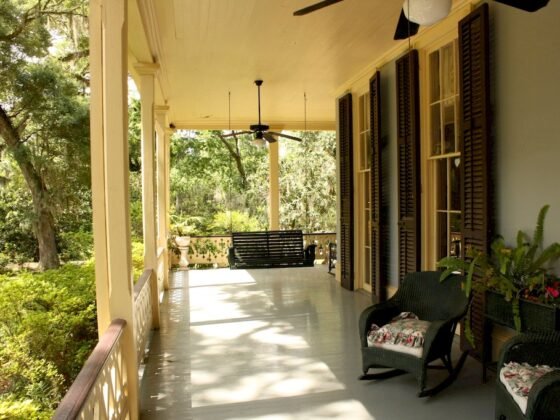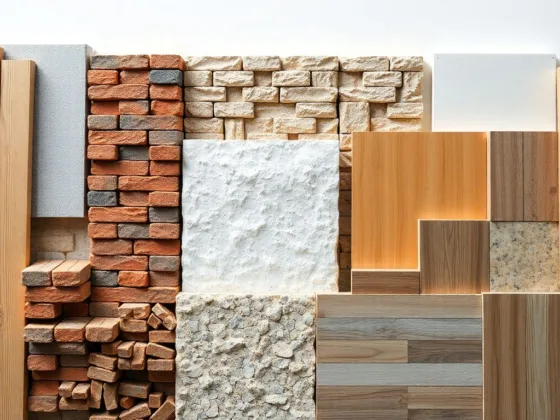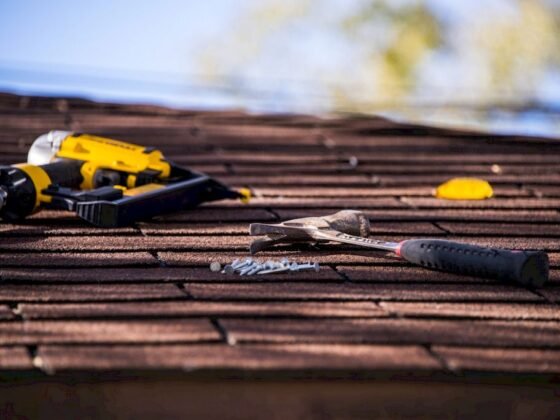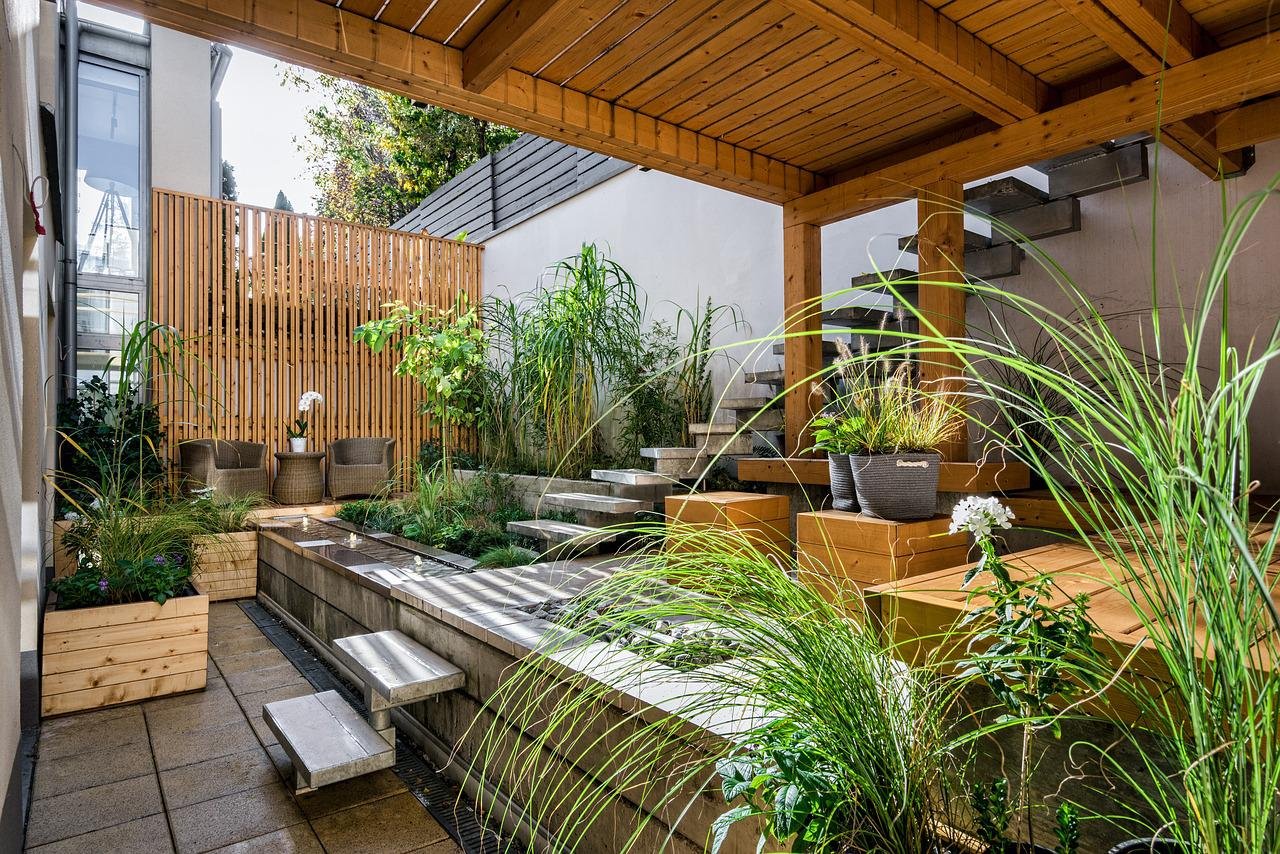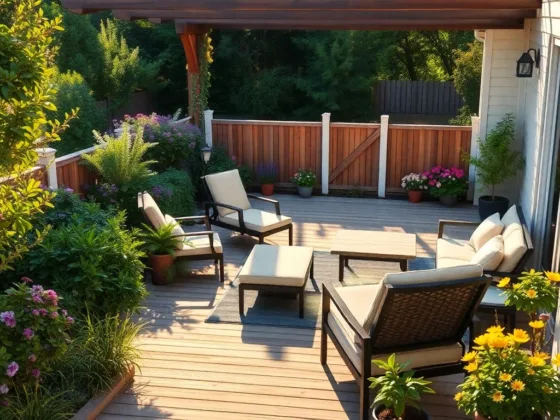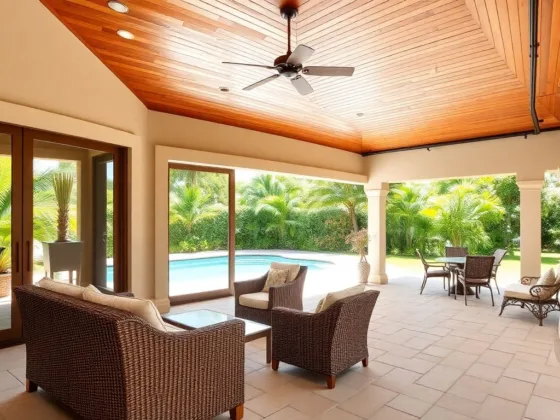Table of Contents Show
For music enthusiasts, the music studio is the most vital thing after their instruments. A room where they can practice their music, concentrate, and relax as well.
But creating a music room doesn’t mean just stuffing an ordinary room with various musical instruments.
If you are thinking of converting your room into a music room this way, then it might not work well.
When it comes to transforming an ordinary room into a music studio, you need to re-design it from top to bottom. I have gathered some tips that can aid you in decorating your music room.

1. Location Selection
The first and foremost thing for a music room is its location. A music room must be free of external interruption, so select a place in your house where no one disturbs you.
Ideal Locations for a Music Room:
- Basement: Often the go-to choice due to its isolation from the rest of the house. Basements typically have fewer windows, reducing external noise.
- Garage: Another excellent option, especially if it’s detached or semi-detached from the main house. Garages provide ample space and can be easily soundproofed.
- Rear Room: If your house has no basement or garage, consider using a room at the back of the house. This location is generally quieter and away from the hustle and bustle of daily family activities.
Benefits of Specific Locations:
Basement Advantages:
- Naturally insulated by being underground.
- Minimal external noise penetration.
- Often more spacious.
Garage Benefits:
- A separate structure means less noise transmission to living spaces.
- Can be customized with acoustic treatments more freely.
- Usually has robust construction ideal for soundproofing.
Back Room Perks:
- Secluded from main living areas, reducing interruptions.
- Easier to control acoustics with proper treatments.
- Typically quieter due to its distance from street noise.
Additional Considerations:
When selecting your music room’s location, keep in mind factors such as:
- Proximity to Neighbors: Choose a spot that minimizes disturbance to neighbors, especially if you play loud instruments or record at odd hours.
- Accessibility: Ensure easy access to your instruments and equipment without disturbing household members.
- Ventilation and Lighting: Adequate ventilation is crucial for comfort during long practice sessions. Natural light can enhance mood but may require curtains or blinds to manage glare on screens or sheet music.
Selecting the right location sets the foundation for an effective and enjoyable music room. Make sure to weigh all these factors carefully before finalizing your choice.
2. Add Sound Absorption
The sound-absorption technique insulates the room and absorbs unwanted sounds. Noise and echoing can cause significant disruption in your practice and music recording sessions. Implementing sound-absorbing materials not only helps to isolate noise but also enhances the acoustics and clarity of sound within your music room.
Sound-absorbing objects act as barriers that muffle excess noise, making your space more conducive for both practice and recording. Additionally, these items contribute to the aesthetic appeal of your music room.
Here are several effective sound-absorbing options:
- Rugs: Placing rugs on the floor can significantly reduce echo and reverberation. They are particularly effective on hard surfaces like tile or wood.
- Wooden Floors: While wood is not inherently absorbent, combining wooden floors with rugs can create a balanced acoustic environment.
- Concrete Walls: Concrete is excellent for blocking external noise but may require additional treatments like acoustic panels to manage internal sound reflection.
- Heavy Curtains or Honey-Combed Shades: Thick fabrics like velvet curtains or honey-combed shades absorb sound waves, preventing them from bouncing around the room.
- Acoustic Ceiling Tiles: These specialized tiles are designed to reduce ceiling reflections, which is crucial in rooms with high ceilings.
- Acoustic Lighting: Combining lighting solutions with acoustic properties, these fixtures help in dampening noise while providing adequate illumination.
- Upholstered Chairs and Couches: Furniture with soft, padded surfaces absorbs sound waves effectively and adds comfort to your space.
Utilizing these elements will make your room echo-free and enhance its overall acoustic quality. By carefully selecting and arranging these materials, you can create an optimal setting for producing clear and precise audio recordings.

3. Using Soundproofing Materials
Another important aspect that your music room must-have is soundproofing objects. A music room is inherently a loud place, used for both practice and recording. This noise can be disruptive to other members of your household.
Soundproofing helps restrict the sound within the music studio, allowing other family members to stay comfortable. Additionally, it aids in eliminating external noise, ensuring a quieter and more controlled environment for your recordings.
You can use various materials for soundproofing. Some of the most common soundproofing materials are:
- Acoustic Foam: Often referred to as studio foam, this material is excellent for absorbing sound efficiently. It can be applied to walls or hung from ceilings.
- Acoustic Panels and Boards: These not only enhance the decor of your music room but also serve as effective soundproofing materials.
- Mass Loaded Vinyl (MLV): This heavy, flexible material can be applied to walls, floors, and ceilings to block sound transmission.
- Resilient Channels: These are metal channels that are attached to wall studs or joists before adding drywall. They create a buffer zone that reduces sound transmission through the structure.
- Soundproof Curtains: Made from thick, dense fabrics like velvet, these curtains absorb sound waves and prevent them from bouncing around the room.
Other beneficial materials include:
- Acoustic Coatings: Specialized paints that contain sound-absorbing properties.
- Acoustic Fabric: Fabrics designed specifically to reduce noise levels when used in drapes or curtains.
By carefully selecting and combining these materials, you can create an optimal setting for producing clear and precise audio recordings while maintaining a peaceful environment for everyone else in your home.
4. Strong Color Scheme
The color scheme is essential in improving the outlook of your music studio. It also boosts your skills, as the atmosphere has a significant impact on the functioning of your brain.
Inspirational Colors
Vibrant colors can energize and inspire creativity:
- Red: Known for its intensity and ability to stimulate energy levels.
- Orange: Promotes enthusiasm and excitement, perfect for sparking creativity.
- Yellow: Often associated with happiness and positivity, enhancing a cheerful environment.
- Green: Provides a sense of calmness and balance, ideal for long recording sessions.
Elegant Tones
For those who prefer a more subdued and sophisticated ambiance:
- Gray: Offers a neutral background that can bring out other design elements without overwhelming the senses.
- Blue: Known for its calming effect, blue can help reduce stress and maintain focus.
- Violet: Adds a touch of luxury and creativity, making it perfect for artistic spaces.
Combining Colors
Consider combining different hues to create a balanced atmosphere:
A well-balanced color scheme can make your studio both functional and aesthetically pleasing.
- Pair vibrant colors with neutral tones to avoid overstimulation.
- Use accent walls to introduce bold colors without overwhelming the space.
- Incorporate colored lighting to add versatility to your studio’s mood.
By carefully selecting and combining these colors, you can create an environment that not only looks great but also enhances your creative output.
5. Light Optimization
Extremely bright light doesn’t look pleasant in your music studio. An optimized light will be sufficient for it. Here are some key considerations and options to ensure your studio lighting is both functional and inspiring:

Types of Lighting
Ambient Lighting: Provides overall illumination, setting the general mood of the room.
- Ceiling Lights: Use dimmable LED lights to control brightness levels.
- Wall Sconces: These can add a touch of elegance while providing soft, diffused light.
Task Lighting: Focuses on specific areas where you need more direct light.
- Desk Lamps: Ideal for reading sheet music or working on a computer.
- Under-Cabinet Lights: Perfect for illuminating workspaces without casting shadows.
Accent Lighting: Enhances the visual appeal and highlights specific features.
- Spotlights: These can be directed towards artwork, instruments, or other focal points.
- LED Strips: Versatile and can be placed under shelves or along edges for a modern look.
Creative Lighting Options
You can also use floor or hanging lamps to illuminate a music studio. Metallic lamps also look enchanting with strongly-colored walls. Here are some additional ideas:
- Floor Lamps: Tall floor lamps with adjustable heads can provide both ambient and task lighting. They come in various styles, from minimalist designs to more ornate options.
- Hanging Lamps: Pendant lights or hanging lanterns can add a unique flair to your studio. Choose designs that complement your studio’s decor.
Specialized Lighting Choices
Consider these specialized lighting options to elevate your studio environment:
- Spotlights: Perfect for highlighting specific areas or creating dramatic effects. Position them to focus on important elements like your mixing desk, recording booth, or favorite instrument.
- LED Lights in False Ceilings: Integrated LED lights offer a sleek and modern look. They provide an even distribution of light and can often be color-adjusted to suit different moods.
- Mini-Crystal Chandeliers: Add a touch of luxury and sparkle with mini-crystal chandeliers. They work well in studios aiming for a sophisticated ambiance.
- Floor Globes: These spherical lights can serve as both decorative pieces and functional lighting. Place them strategically around the room for an artistic touch.
Enhancing Mood and Performance
Such lighting will enhance your mood, making you feel more comfortable and inspired to perform better. Consider these tips:
- Dimmable Options: Ensure that most of your lights have dimmable options so you can easily adjust the brightness according to your needs.
- Colored Lighting: Incorporate colored lighting options that can change hue. This flexibility allows you to set different moods—for example, calming blue for mixing sessions or energizing red for live performances.
- Smart Lighting Systems: Consider installing smart lighting systems that allow you to control all aspects of your studio’s lighting through an app or voice commands.
By carefully selecting and combining different types of lighting, you can create an environment that not only looks great but also enhances your creative output.
6. Furnishing the Room
When it comes to furnishing your music room, choose styles that resonate with your musical preferences. The furniture should not only inspire you but also enhance your artistic capabilities. Here are some detailed considerations:
Comfortable Seating
- Upholstered Chairs and Sofas: These are not only comfortable but also serve as good sound absorbers. They help in reducing unwanted noise reflections, creating a more controlled acoustic environment.
- Musician Seats: Opt for well-cushioned seats that are height-adjustable to ensure foot comfort during long practice sessions. Ergonomic designs can prevent strain and improve posture.
Avoiding Uncomfortable Options
- Steer Clear of Cheap Plastic Furniture: Such furniture is often uncomfortable and can detract from the professional appearance of your studio. Investing in quality pieces will pay off in the long run.
Flooring Choices
- Laminate Wooden Flooring: This type of flooring adds an elegant touch to your music studio. It’s durable and easy to clean, which is essential for a high-traffic area like a music room.
- Rugs and Carpets: Consider adding rugs or carpets in certain areas to further improve acoustics by absorbing sound and reducing echo.
Additional Features
- Stage for Group Performances: If space allows, incorporating a small stage can be beneficial for group rehearsals and performances. It adds a professional touch and provides a dedicated area for showcasing talent.
- Storage Solutions: Ensure that you have adequate storage solutions like shelves, racks, and cabinets to keep your instruments, sheet music, and other accessories organized.
By thoughtfully selecting each piece of furniture and considering its impact on both aesthetics and functionality, you can create a music room that is both inspiring and conducive to creativity.
7. Investing In High-Quality Speakers

Your music room will be incomplete without high-quality speakers. For this, you certainly need top-notch speakers for your music studio.
Installing the best quality speakers is not too expensive and not much difficult as well. You can buy the best center channel speakers at an affordable cost.
Here are a few options to consider:
- Polk Audio T30: Known for delivering clear dialogue and excellent sound detail, making it ideal for both music and movie experiences.
- M-Audio BX5 D3: Offers professional-grade sound with accurate audio reproduction, perfect for critical listening and mixing.
- Definitive Technology Procenter 1000: Compact yet powerful, this speaker ensures you don’t miss any nuances in your audio.
- Mackie Studio Monitor: Renowned for its precise sound imaging and robust build quality, suitable for various studio setups.
- Edifier R1280T: A budget-friendly option that does not compromise on sound quality, featuring rich bass and balanced midrange.
- KRK RP5G3 ROKIT 5 G3: These monitors are famous for their accurate sound representation, widely used by professional musicians.
If you are addicted to watching movies or playing games on a big screen in your studio or music room, then you must install a big screen. To complement this setup, you can’t miss a projector.
To get the best projector within your budget, just check out this article. Some studios even recommend having a projector installed to enhance the visual experience.
By thoughtfully choosing your speakers and considering additional multimedia equipment like projectors, you can create an immersive environment that caters to both your musical and entertainment needs.
8. Accessorize the Music Room
Improving the outlook and functionality of your music room can’t be achieved without thoughtful accessorizing. Various gadgets can enhance both the aesthetic and operational aspects of your space.
Essential Accessories
Consider adding the following essential accessories to your music room:
- Headphone Stand: Keeps your headphones organized and easily accessible.
- Speaker Stand: Elevates speakers to ear level, improving sound quality and reducing desk clutter.
- Keyboard Holder: Provides a dedicated space for your keyboard, allowing for better ergonomics and more desk space.
- Cable Holder: Manages and organizes cables, preventing tangling and keeping your workspace tidy.
Additional Gadgets
For those who enjoy experimenting with different soundscapes, consider adding:
- DJ Controller: Perfect for sound-mixing experiments, enabling you to create unique audio experiences.
Recording Equipment
Investing in high-quality recording equipment can make a significant difference in your music production:
- Microphones: Choose from a range of microphones suitable for vocals, instruments, or ambient recording.
- Dynamic Microphones: Durable and versatile, ideal for live performances.
- Condenser Microphones: Sensitive and accurate, perfect for studio recordings.
- Microphone Holders: Ensure stability and reduce handling noise during recordings.
- Recording System: A robust music recording system is a fruitful investment that enhances the quality of your productions.
By carefully selecting these accessories and gadgets, you can transform your music room into a well-organized, efficient, and inspiring creative space.
9. Invest In Musical Instruments
Musical instruments are the most essential part of a music studio. You must consider browsing Collings guitars and buying some high-quality musical instruments for your music studio.
Your music studio will be incomplete without a big piano, a drum set, and guitars. You can add other musical instruments depending on your music style.
Key Instruments to Consider:
- Piano: A grand or upright piano can serve as the centerpiece of your studio, providing rich, full sounds that are perfect for a variety of genres.
- Drum Set: A complete drum set is crucial for creating rhythm sections. Look for sets that include bass drums, snare drums, tom-toms, and cymbals.
- Guitars:
- Electric Guitars: Essential for rock, pop, and jazz.
- Acoustic Guitars: Great for singer-songwriters and folk musicians.
- Bass Guitars: Adds depth to any ensemble.
Additional Instruments Based on Genre:
- Keyboards/Synthesizers: Perfect for electronic music production and adding layers to compositions.
- String Instruments: Violins, cellos, and double basses can add classical elements to your recordings.
- Brass and Woodwind Instruments: Saxophones, trumpets, flutes, and clarinets are ideal for jazz and orchestral arrangements.
Tips for Selecting Instruments:
- Quality Over Quantity: Invest in fewer high-quality instruments rather than numerous low-quality ones.
- Acoustic Treatment Compatibility: Ensure the instruments you choose will sound good in your acoustically treated space.
- Maintenance and Care: High-quality instruments often require regular maintenance. Factor this into your budget.
By carefully choosing a diverse range of musical instruments tailored to your specific needs, you enhance the versatility and capability of your music studio.
10. Wall Decoration

Wall decoration plays a vital role in creating a professional music studio. Enchanting sceneries and matted posters of your favorite artists form an inspirational theme, fostering creativity and motivation. Here are some ideas to elevate the ambiance of your studio:
- Vinyl Records: Hanging vinyl records on the wall is not only a nod to musical history but also adds a unique aesthetic touch.
- Mounted Guitars: Displaying guitars on the wall can serve both as functional storage and as a decorative element that reflects your passion for music.
Lighting
Adding lights on the back wall of your stage or around key areas provides both practicality and visual appeal. Consider:
- LED Strip Lights: These can be placed behind instruments or along shelves to create a modern, vibrant look.
- Spotlights: Focused lighting can highlight specific decor items, such as framed awards or notable instruments.
Inspirational Quotes
Adding inspirational quotes on the wall can energize you and boost your skills. Some benefits include:
- Motivation: Seeing words of wisdom from celebrated musicians can inspire you during creative slumps.
- Personal Touch: Customizing quotes that resonate with you makes the space uniquely yours.
Bookshelves
Installing bookshelves not only decorates the wall but also acts as a reflecting surface to prevent excessive sound absorption, contributing to better acoustics. Benefits include:
- Multi-functionality: Bookshelves provide storage for music books, scores, or even small instruments.
- Aesthetic Appeal: Well-organized shelves add a sophisticated touch to your studio.
Creating Your Music Room
Creating a music room or a music studio at home is entirely achievable with proper planning and creativity. Here’s what you need:
- Theme Selection: Decide on an overarching theme that resonates with your musical style and personal taste.
- Inspirational Decoration: Incorporate elements that inspire you, whether they are posters, records, or unique lighting setups.
- Functional Elements: Ensure that all decorative items also serve practical purposes, such as improving acoustics or providing storage.
Transform your regular room into a real music studio by applying these design tips. Create your music room and have fun making music in an environment tailored just for you!
FAQs (Frequently Asked Questions)
The first and foremost thing for a music room is its location selection.
You can add sound absorption techniques to insulate the room and absorb sound.
You should use soundproofing materials to ensure that your music room is properly insulated.
The color scheme is essential in improving the outlook of your music room.
Extremely bright light doesn’t look pleasant in your music studio, so light optimization is key.
When it comes to furnishing your music room, use styles that complement the overall theme and purpose of the space.
Basements are often naturally insulated by being underground, providing a more isolated and soundproof environment for a music room.
When selecting the location for a music room, it’s important to consider factors such as natural light, accessibility, and potential noise disturbances from other areas of the house.
You can enhance the mood and performance in your music room by using specialized lighting options such as ambient lighting, creative floor or hanging lamps, and other lighting choices that elevate the atmosphere.
Key instruments to consider for a music room include pianos (grand or upright), keyboards/synthesizers for electronic music production, and other high-quality instruments. It’s important to prioritize quality over quantity when selecting instruments.




